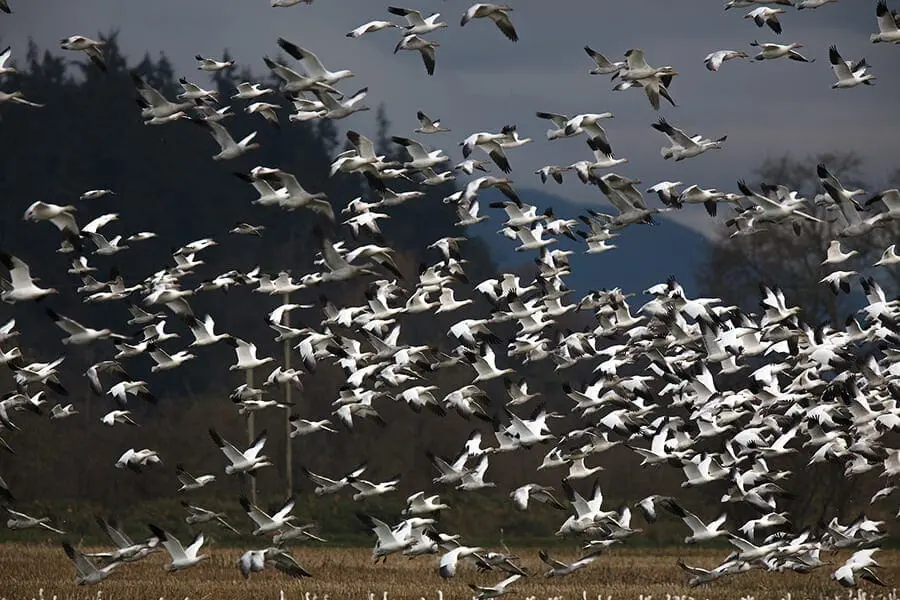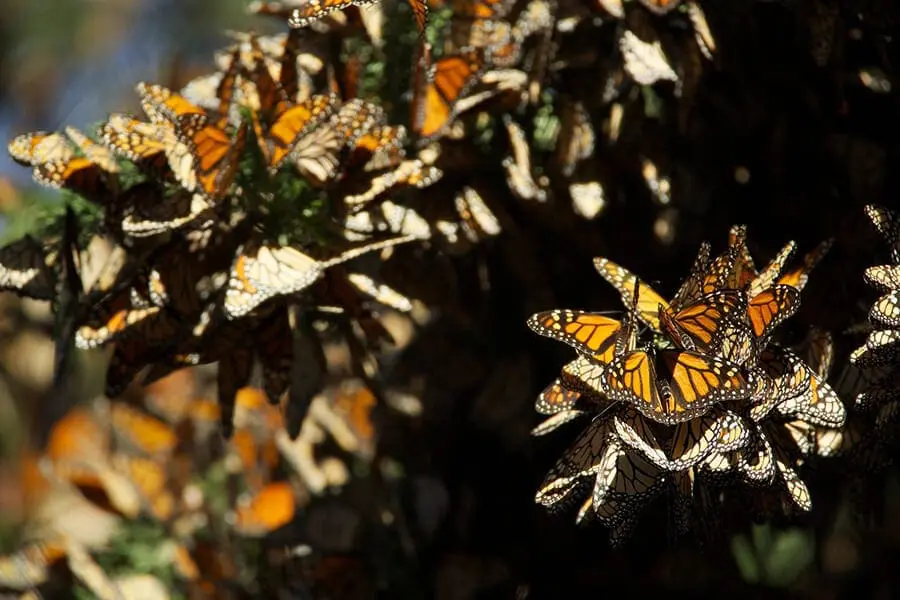

A skein of snow geese flock together on their journey.
In Florida, we joke about “snowbirds,” or people who come from northern states for extended vacations to escape the cold winter weather. This nickname stems from the well-known fact that many birds fly to warmer climates just before winter begins.
In North America, there are over 650 species of birds and more than half are migratory. One hundred years ago, Congress passed the Migratory Bird Treaty Act (MBTA) in response to the endangerment and extinction of several bird species caused by human hunting, particularly for their meat, feathers and value as pets. Throughout the past century, the MBTA has evolved to consider emerging technology and include other countries. It continues to protect over 1,000 species. Birds aren’t the only ones to move around, or migrate, though; many types of animals leave a specific area for a new one several times throughout their life. Where do they come from and where are they going?
For some species, migration takes place over several generations. Monarch butterflies, like those seen in our upcoming Butterflies and the Magic of Nature exhibit, travel between central Mexico and as far north as Canada. On their way north, they stop in the southern United States, where females reproduce at least twice before reaching their summer destination. Scientists don’t fully understand why these butterflies migrate over such a long distance, though it is believed they are following the seasonal emergence of milkweed—the plant that hosts their young.

Monarch butterflies stop to reproduce during their migration period.
Migration is almost universal in the animal kingdom. Fishes, mammals, reptiles and even invertebrates move around, too. Most species travel to find food, a wealthier ecosystem or better breeding grounds. Some species move very short distances, such as from a high to low elevation on a mountain, and others travel thousands of miles each year. To prepare for their journeys, many animals alter their physical state by gaining or losing weight, or growing new feathers. Over many generations, migration patterns have evolved in response to changing weather, geography, food sources and other factors. The genetic basis of these adaptations is not well understood, but research has clearly indicated migrants can use the sun, stars, light, Earth’s magnetic field and their sense of smell to find their way.
There is a lot to be learned about migration and it’s easy to observe literally anywhere in the world! Here in Florida, we’re lucky enough to serve as a destination or waypoint for some of the world’s most incredible migrations. Manatees often drift into our warm freshwater springs to escape the ocean’s chilly winter temperatures. In spring and summer, sea turtles come from thousands of miles away to nest near the beaches they hatched on. Right whales, one of the world’s most endangered large mammal species, give birth almost exclusively near the shores north of Cape Canaveral. Birds can be seen migrating throughout the state, and the Dry Tortugas is a stopping point for thousands of warblers and other birds travelling across the Gulf of Mexico. The journey isn’t always easy for these animals, but the amazing treks they embark on are for the success of their species and are fascinating to watch!
